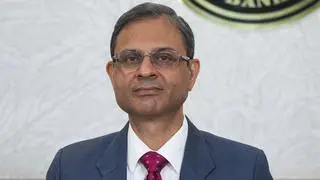
USTR’s fresh emphasis on ‘prohibitive tariffs’ on farm products may make the going tough for Indian team visiting US
| Photo Credit:
AmyLaughinghouse
With the US finally giving its official approval to the Terms of Reference for the India-US bilateral trade agreement (BTA), the stage is now set for officials from the two sides, who are meeting this week in Washington DC, to flesh out details of the areas and issues to be covered in the negotiations.
The going, however, is likely to be tough for India, with US Trade Representative Office reinforcing on Wednesday the need for tariff cuts in agricultural products, an economically and politically sensitive area for India.
“The US has one of the lowest average applied tariff rates on agricultural products. But many of our trading partners maintain prohibitive tariff rates that constrain export opportunities for American farmers and ranchers,” said USTR in a social media post.
USTRFarm trade
Unfair and non-reciprocal practices have undermined US competitiveness and led to large and persistent trade deficits with many trading partners, he added. “This year the US agricultural trade deficit is projected to grow to $49 billion—a record high!,” Greer pointed out.
Apart from the scope of tariffs cuts, a decision on inclusion of other areas such as intellectual property, digital trade, government procurement, social security and work visas will also now be thrashed out between trade officials from the two sides, sources said.
“The US nod for the ToRs, announced by US Vice-President JD Vance after his meeting with Prime Minister Narendra Modi on Monday, has come just in time to give direction to top officials from the two countries, who are meeting in Washington DC this week, on the coverage of the BTA,” a source tracking the matter told businessline.
ToRs outline the specific goals of a trade agreement, such as reducing tariff barriers, non-tariff barriers, regulatory concerns and customs facilitation or address specific trade-related issues such as lowering of trade deficits.
On the table
“Trade officials will now discuss, among other things, what the scope of tariff cuts should be, what all would qualify as non-tariff barriers and how should they be treated and what regulatory matters need to be put on the table. Determining the scope for agriculture will be particularly difficult as it is a sensitive area,” the official said.
The officials will also try to schedule the talks in a way that a part-outcome is reached within the 90-day pause period for the US reciprocal tariffs.
On April 2, US President Donald Trump announced reciprocal tariffs on most countries that have trade surpluses with the US, including India which got slapped with 26 per cent levies, but he paused them for 90 days to give time for trade deals.
More Like This
Published on April 23, 2025












